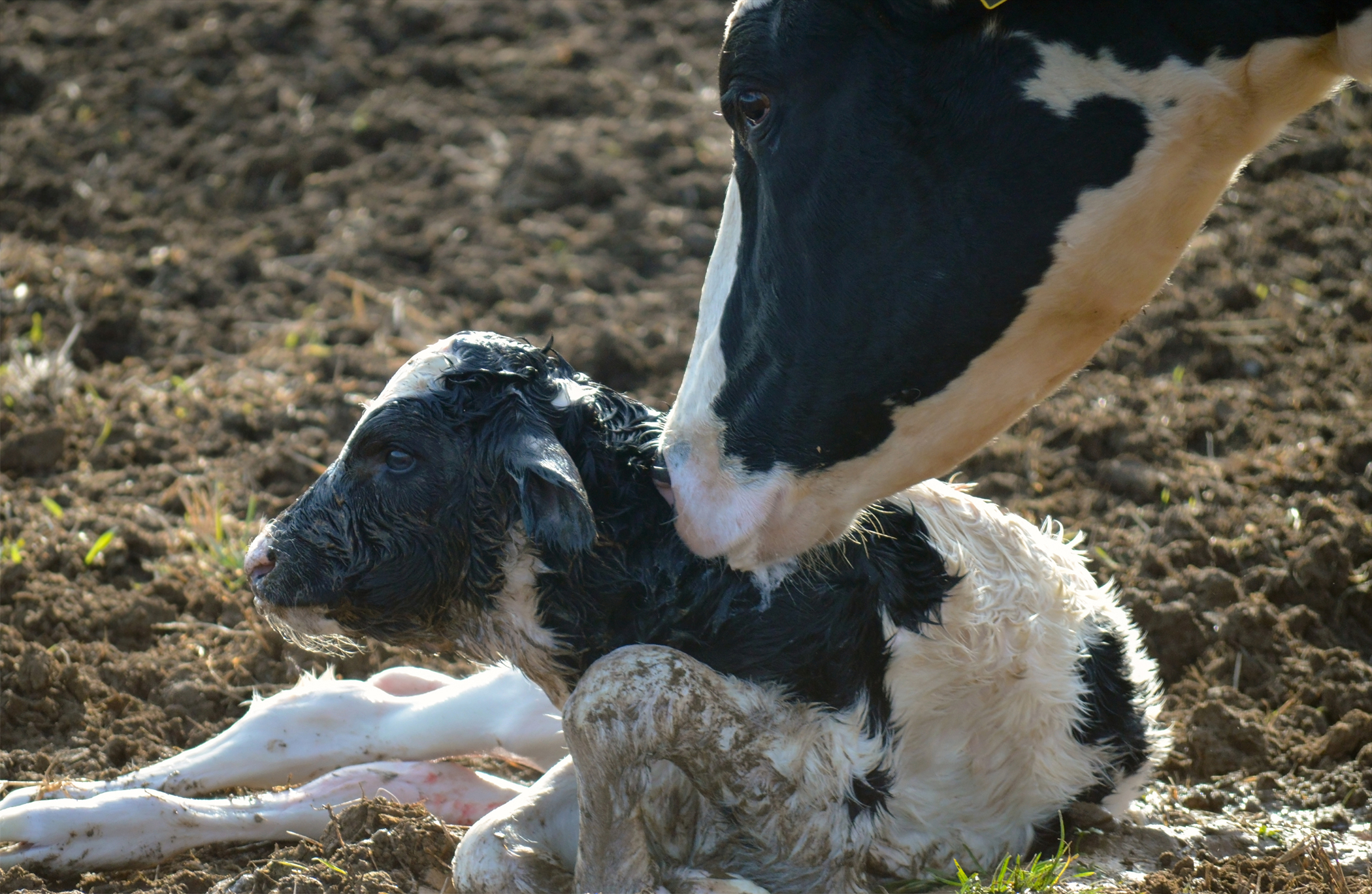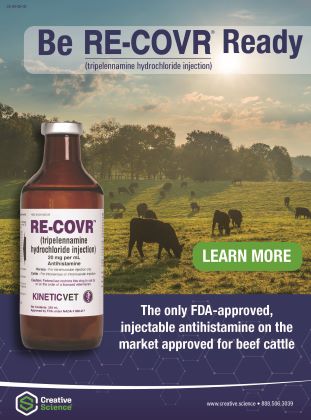Coccidiosis in Dairy Cows

Coccidiosis in Dairy Cows
By Heather Smith Thomas
Bovine coccidiosis is one of the major diseases in young calves. It can quickly and easily spread, and can have devastating effects on calves.
Coccidiosis occurs wherever cattle are raised; all adult animals harbor some of these protozoan parasites and shed a few in their feces, but rarely have problems themselves because they have developed some immunity. The only time an older animal might show signs of coccidiosis is if severe stress lowers immune defenses, allowing these protozoa to multiply in greater numbers. This disease makes its greatest impact on calves less than a year old, causing severe damage to the intestinal tract. The primary sign is diarrhea and this can vary in severity, sometimes leading to secondary infections and even mortality.
Coccidiosis can be a costly disease in terms of treatment costs, labor, reduced weight gain in affected calves, poor feed conversion, and increased susceptibility to diseases. These animals are unthrifty for a while and set back in growth, and studies have shown that diarrhea in young heifers can result in lowered first-lactation milk production.
Diarrhea in calves can be serious, especially if they become dehydrated or the gut is damaged too much to absorb fluid and nutrients. Sometimes it’s not easy to tell whether the cause of scours is bcterial, viral or due to a protozoal parasite like coccidia or cryptosporidia, but the age of the animal and the appearance of the feces can be a clue, according to Russ Daly, DVM (Extension Veterinarian and Professor, South Dakota State University.
Coccidiosis is caused by a protozoa, which is a very hardy organism. It can be a big problem in baby calves in certain situations and weather conditions, but can also be serious in pens of weaning-age calves or even yearlings in a feed yard. These protozoa are picked up by the calf from a contaminated environment. Most adult cattle have encountered the protozoa during their lifetime and have developed some resistance to its effects, but may continue to shed a few oocytes in their feces—which can then contaminate feed or water. If calves ingest a high number of protozoa in a dirty environment they may break with coccidiosis. Dairy calves can usually be kept free of exposure if they are born in a clean place and kept in clean housing, but if the cow happens to calve in an area with lots of manure, the calf may pick up the protozoa soon after birth, trying to nurse a dirty udder or encountering manure on the cow’s legs or flanks while trying to find the udde.
The coccidia live for a very long time in a dormant stage in the environment and can be ingested with contaminated feed and water, or when calves lick themselves after lying on dirty ground or bedding.
The incubation period for coccidiosis is much longer than for viruses or bacterial diseases. “The protozoa take awhile to damage the intestinal lining to the point that the calf breaks with diarrhea,” says Daly. After the calf ingests the oocysts (egg stage) of coccidia, those immature protozoa must go through several stages as they multiply within the cells of the intestinal lining. Then they break out of the cells (destroying those cells in the process), to be shed in the feces and contaminate the environment and potentially infect other animals. This life cycle takes 3 to 4 weeks from the time the calves ingest the oocysts until they show diarrhea.
A low level of protozoa in the intestines won’t cause signs of disease, but since calves generally pick up a few, they will have some cocci in their systems by the time they are weaned and living with other calves or enter a feed yard. Stress and/or bad weather may lower the animals’ resistance and that’s when those organisms really start to multiply and more of them are shed in feces, and into the environment.
Prevention
“Multiple animals confined in a small area are always exposed to higher levels of coccidia in their environment. They are more likely to be affected than calves out in large pastures. This tends to be a dose-related disease,” says Daly.
With the stress of weaning, and perhaps the stress of co-mingling with other calves in a group pen, calves are more likely to be vulnerable to coccidiosis. Stress can hinder their ability to resist the effects of these pathogens. “Coccidiosis is something we deal with a lot, in feedlot situations,” he says.
With a group of weaned calves, medication can be added to their feed or water to help prevent sickness. “Wet weather seems to make it easier for the oocysts to survive longer in the environment, creating perfect conditions for calves to pick up higher doses and become sick.” If the pen is wet and muddy, with a lot of fecal matter, calves may pick up a high dose of these pathogens.
“There are several types of medication that can be put in the calves’ feed, such as Rumensin, Bovatec, Deccox, etc. It’s usually wise to include some type of preventative medication in the feed, when calves are grouped together. Each type of product affects a little different part of the life cycle of the coccidia. These products are usually fed for at least 28 days when we are trying to prevent the disease because that’s the length of the life cycle of the protozoa. We do need to stay on it for that full length of time, for prevention” says Daly.
Diagnosis
One sign of coccidiosis is blood in the feces. “This can vary, however. There may be a great amount of blood, or none. If we see blood in the feces of a month- old calf, however, this is a pretty good clue that it’s coccidiosis because there are not very many other diseases that would cause this situation, at that age,” he says. In older calves there may not be blood in the feces, however, or even a very loose stool.
“When we see bloody feces or big outbreaks of diarrhea we know there is serious infection. Stress in the group is usually when we see these outbreaks blow up. Weather conditions are also a factor. In cool, wet weather we see more exposure to the disease, probably because more of these protozoa are present in the environment in a viable form—along with the weather stress on the animals,” he says. This may exacerbate situations that are already present. Keeping calves housed in dry areas with shelter can be helpful.
“Coccidiosis is usually diagnosed with a fecal sample. The veterinarian can do a fecal float to determine if oocysts are present. Sometimes, however, we see situations where there is damage in the intestines due to coccidiosis and the calf is scouring, but the life cycle of the organism hasn’t yet progressed to the point where we can find oocysts being shed.” The fecal sample may look normal; the oocysts might not show up in the feces for another day or so.
Severity of the disease may depend on the level of exposure and how much resistance the animals have. Young animals are especially vulnerable. “There is no vaccine for this disease; it’s hard to create a vaccine against a protozoan infection. It’s best to try to manage the environment to minimize exposure and reduce the number of calves that might get sick,” explains Daly.
There are many types of coccidia, affecting different species of animals. This disease is host-specific, meaning that lambs won’t get it from cattle and cattle can’t get it from birds. “There are many animals that serve as hosts for certain kinds of coccidiosis. It can be a problem for poultry, baby pigs, etc. but it is very species specific. If calves get coccidiosis, they got it from other cattle,” explains Daly.
Treatment
If coccidiosis is diagnosed or suspected, the calf should be treated with appropriate drugs, along with good supportive care to replace the fluids and electrolytes being lost. In some cases in baby calves so much fluid is lost that they dehydrate dramatically. Some may need IV fluids.
“Drugs like Amprolium and certain sulfa drugs can be used for sick calves during an outbreak,” he says. “The labels may vary and producers need to follow directions on the label. Most of those labels will allow for a higher level (than you’d use for prevention) for a shorter time, for treatment,” says Daly.
“In some cases, we may put medication in the water, to dose all the animals. In really bad cases we may dose individual animals with drenches containing Corid or sulfa medications. It can be difficult to determine when we need to start coccidiosis treatment, and it may depend on taking fecal samples to be checked by a veterinarian. Depending on weather and other factors. if these are younger animals we might need to start treatment quicker or provide another round of preventive medication in the feed or water.
You may need to use tanks instead of automatic waterers, so you can add the medication to the water.”




